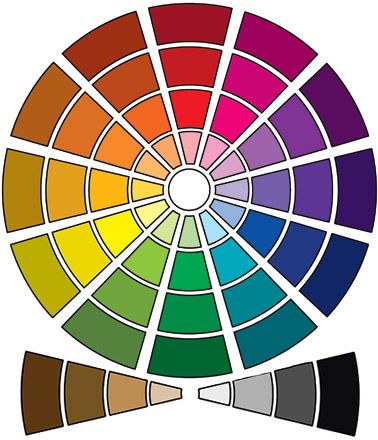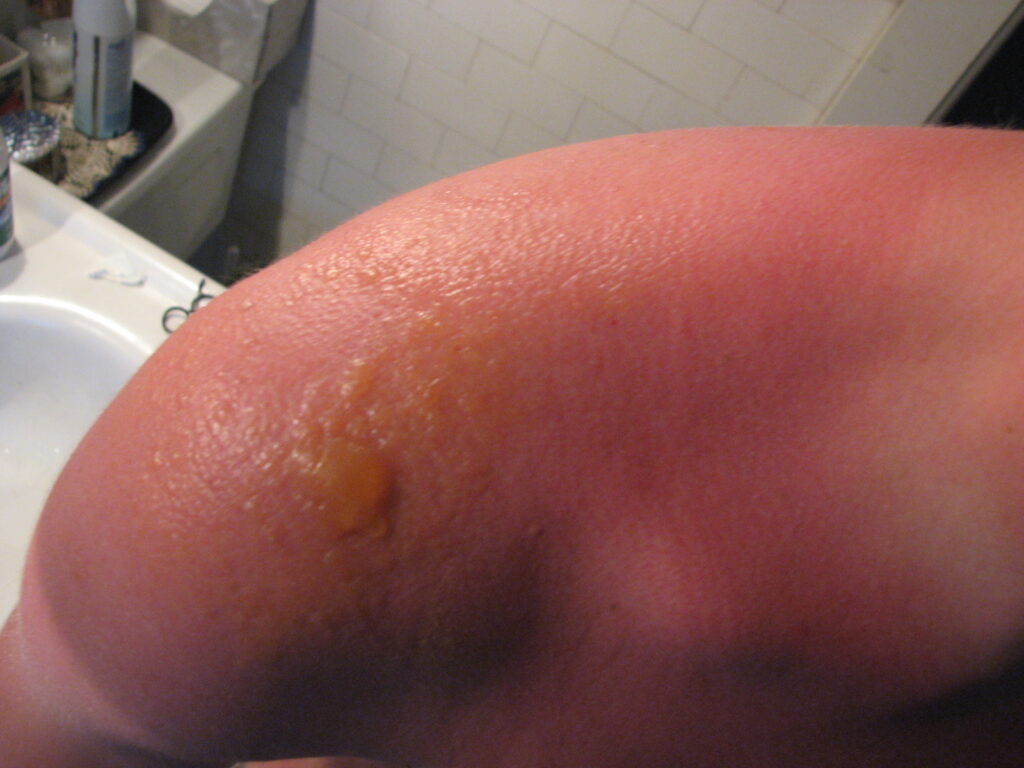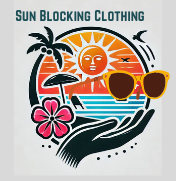
How to use the power of color for protection from the sun is your Guide to Sun Protection for the Whole Family.
Are you aware of the sun’s hidden threat? Do you need a Guide to Sun Protection for the Whole Family?
As the warm summer months approach, many of us are eager to embrace the outdoors and soak up the sun’s radiant energy. At the end of that same summer are you left with sun-damaged skin?
Do you end up with more freckles and a tan that will slowly fade, leaving dry skin and wrinkles?
Yes, it’s crucial to remember that the sun, while a source of warmth and vitality, also poses a hidden threat. Those harmful ultraviolet (UV) rays produce radiation.
To safeguard your skin and that of your loved ones, it is important to understand a little about color science. Understand how the colors you choose in your clothing and accessories can play a significant role in sun protection.
Let’s move forward with some review of sun damage.
Understanding Sun Damage
Before we get into the power of color in sun protection, let’s briefly explore the potential consequences of excessive sun exposure.
UV radiation from the sun can wreak havoc on your skin, leading to premature aging, sunburn, and even an increased risk of skin cancer.
This is why proactive sun protection should play a vital spot in our daily lives.
We no longer can deny that the sun produces a healthy tan. We know better. Dermatologists tell us that tan is nothing but skin damage. Damage to the point of the top layers of skin flaking off.
But we as humans who do not want to change our unhealthy lifestyles still want to spend time in the sun. So, let’s add color to our toolbox of ways to protect our skin from too much sun.
Every time we add another layer of defense from the sun, we are protecting our skin that much more. Avoiding more exposure that can lead to skin cancer.

How Can Color Shield Your Skin?
The color of the clothing you wear can have an impact on its sun-protective properties. Some colors make a huge difference, some only a little.
Understanding the Ultraviolet Protection Factor (UPF) is key to making informed choices.
UPF measures a fabric’s ability to block UV radiation, much like SPF does for sunscreen. The higher the UPF rating, the more effective the fabric is at shielding your skin from the sun’s harmful rays.
Some of the factors to consider when looking at the cloth a garment is made of are the basics like, is the fabric woven tightly or is it loosely woves and would allow sun pricks through?
Synthetic fibers are usually better than natural fibers because they can be woven so tightly together that the sun has no chance to peek through them.
Natural fibers like unbleached cotton will have trash from the processing of the cotton to make the fiber to weave it. If the cotton is bleached to make it pure white, it will block less sun as the bleaching process will weaken the fiber.
Cotton is usually bleached when preparing for dying as well. So a bright red cotton shirt was white at one point. The dye to leave the color will soak into the shirt fibers, and be thicker as well as have color. The thicker fibers can be woven into a tighter fabric.
This tighter weave will allow the garment to block more UV rays. It is considered to have a higher UPF factor.
How to Choose The Right Colors For Clothing
Now that you know about UPF, let’s talk about the role color has in sun protection.
Darker colors like black, navy, and deep red tend to absorb more UV radiation.
This allows these colors to offer better protection than lighter shades.
However, this doesn’t mean you should exclusively wear dark colors in the scorching sun.
Light-colored clothing can still provide some protection and offers a cooling effect by reflecting more heat.
Family Sun Safety
Sun protection should extend to your family members, especially children. They can learn how to use the power of color for protection from the sun.
Children with their younger newer skin which is more sensitive and more susceptible to UV damage. Keeping youngsters safe in the sun just using sunscreen can be iffy.
When selecting clothing for your family, consider the color and UPF rating. Working with color that absorbs the sun away from the skin can make all family members safer in the sun.
Of course, it is important that sun-safe tactics are part of the plan to reduce the time of day you are exposing yourself to direct rays. Avoiding the sun from 10 AM until 4 PM during the summer months will be another protection proceedure that costs nothing.
If you are out, involve everyone to stay properly sunscreened and protected. If this is difficult to do with your family members, do the smart thing and keep them in during the more dangerous hours of the day.
However, you can help your family be more sun-safe independent by teaching them about the darker colors, and remembering the sunscreen if they are out in the sun.
Make sun protection a family affair by educating everyone about the importance of wearing sun-smart colors.
If tennis whites play a part in your family’s lives, explain to them about wearing a wide-brimmed hat, and sunglasses, and remembering to apply sunscreen often.

How About Some Fun and Educational Approaches?
Teaching kids about sun protection can be both fun and educational.
Allow them to help in selecting colorful sun-protective clothing with vibrant patterns and designs.
Help them understand why certain colors are better at keeping the sun’s harmful rays at bay.
You can also help them understand when it is time to come in because the sun is too high to be safe outdoors. Teach them that when they have a long shadow, it is usually safer to be out in the sun,
However, they also need to learn that when the shadow gets short, it is time to head to the house where it is cooler, and shaded from the sun.
Having shaded areas to play in also works well when kids understand about the shadow.
This gives them some independence for being able to know when it is dangerous to be out in the bright direct sun.
Beyond Clothing Think Accessories and More
It’s not just clothing that matters when it comes to sun protection.
Accessories like hats and sunglasses play a significant role in shielding your face and eyes from UV damage.
Choose hats with wide brims and sunglasses with 100% UV protection. The color of your accessories can also impact their effectiveness, so make informed choices.
If you choose a light-colored wide-brimmed hat, go prepared with extra sunscreen. Yes, the wide brim will reflect the sun, but often the reflection will be on your upper chest and collar area.
Water reflects the sun’s rays right back to your face. The light-colored or white brim will place more reflection on your face. Sunscreen is important in these cases.
If you are seated in the bleachers watching a ball game, look around at the surfaces that will reflect the sun. Protect your face from early aging.
Be aware, and know what is going on around you. It will become 2nd nature.
Sun Safety In Different Activities
Different outdoor activities require different types of sun protection.
Whether you’re hiking, camping, playing sports, or simply relaxing at the beach, the color of your gear and clothing can enhance your sun safety.
Be sure to select items tailored to your specific outdoor pursuits.
A loose-fitting long-sleeve shirt out of a tightly woven shirt that is a darker color will protect the truck of your body. This is a part of the body that is especially vernable to sunburn.
Most outdoor sports do have their own standards for comfort and safety in clothing.
My observations are based on what I see around here. Bike riders, I am going to pick on you right now. Most wear darker colors, which are sun-safe. However, when I come up on you on a windy and twisty road, something that is light and bright to catch my eye would be appreciated.
People who like running are often hard to see alongside the highway.
We don’t live where the roads are straight or wide. We live in the country with cow trails paved over for farm-to-market state roads. If we are all going to safely use those roads, please make color choices that can be seen more easily.
Greys, blues, and blacks are practical, I know. However, some self-preservation is in order. Teach your kids about this as well. They are hard to see when at the edge of the pavement on cloudy days.
The Stylish Side of Sun Protection
Don’t think that sun protection means sacrificing style.
Today, there’s a wide range of fashionable sun-protective clothing and accessories available.
From really chic swimsuits to trendy sun hats, you can stay in vogue while keeping your skin safe from the sun’s harmful effects.
Your kids can have all sorts of cool clothing from the leading sun blocking clothing makers. Made of newer fabrics these items are often as comfortable as they look.
If the UPF garment is comfy and looks cool, your kids and family members will be happier keeping it on their bodies.
Oddly enough, some kids have a harder time realizing that they have to be somewhat responsible and leave the garment on for it to keep them safe.
A little patient repetition from you may be required.
However, that is better than having to spend time at the dermatologist getting skin cancer spots removed!
For the sun blocking shirt to protect his body, your son will need to wear the shirt.
Covering your body with UPF clothing is the best way to prevent skin cancer.
UV Safety for Eyes
Your eyes are another area that requires protection from UV radiation.
When choosing sunglasses, look for those with adequate UV blocking, and consider lens color.
The different colors in sunglasses lenses are not just a fashion statement.
The different colors help filter light away from your eyes. But, depending on the lens color, they do so in different ways.
Some sunglasses tints enhance the colors you see. Results in making them appear more vivid.
Some tint colors distort colors, reduce glare, block light, and may even boost visual function.
Simply said, not all colored lenses are right for all occasions. If you have doubts about what you need the lens to do for your vision, stick with the greys. They are the most popular for a reason, they work for more people.
In reality, each colored lens provides different benefits.
The right lens tint should improve your depth perception and reduce eye fatigue. This should be done without hindering your ability to see clearly.
Unless you know the results for your sight, with colored lenses, please try them on before buying. See how the lens works with your vision.
In other words, it’s not the color that matters when it comes to shielding your eyes from harmful ultraviolet rays; it’s what’s on the UV label that counts. And the label on any quality pair of sunglasses should read 100% UV protection, whatever color the lenses.
Some lens tints can enhance contrast and reduce glare, providing better eye protection in different light conditions.
Empowerment Through Color
A takeaway from this color and sun protection is that color plays a pivotal role in sun protection for both yourself and your family.
By understanding how different colors can shield your skin from the sun’s harmful UV rays, you can make informed choices in your clothing and accessories.
Make your clothing dollar go further by using clothing from your closet and Rit SunGuard Laundry Additive to protect your skin from the sun. Laundering the garments you and your family already have will allow the older garments to protect your skin.
Empower yourself with knowledge, and make sun safety a priority in your daily life.
Color can play an important role in your skin safety.

Sami’s Take on How To Use The Power Of Color For Protection From The Sun
There are some simple things you can do to make your sun blocking clothing more effective and do a better job of protecting your skin.
Remember that sun protection is not just a one-time effort but a long-term investment in your skin’s health.
Share this knowledge with your friends and family so that together, we can enjoy the beauty of the outdoors while keeping our skin safe and radiant for years to come.
Making your children aware of skin safety and some simple things they can do will make them able to take better care of their skin, earlier in life.
After raising a family in times when we thought we were bulletproof from skin cancer, my awareness of independent children is important.
They can be responsible for their skin protection from the sun much earlier than I realized. Have you been teaching your family good sun protection for outdoor activities?
Thank you for reading,
Sami
